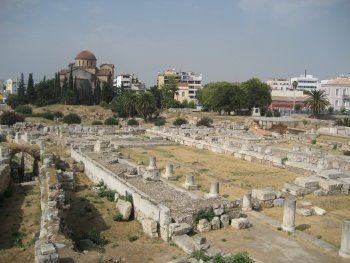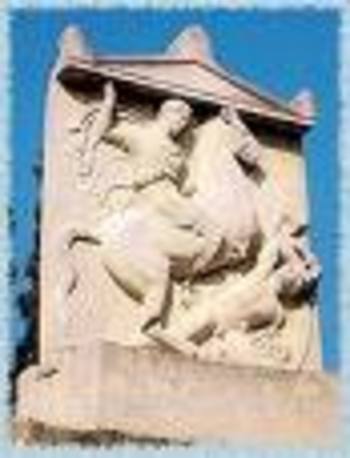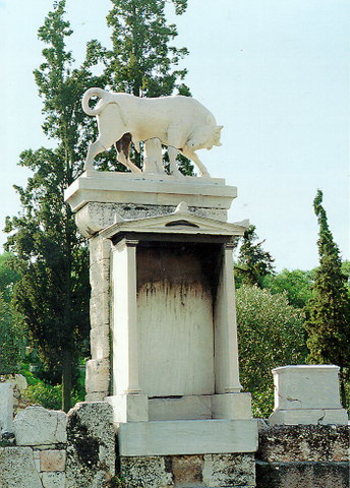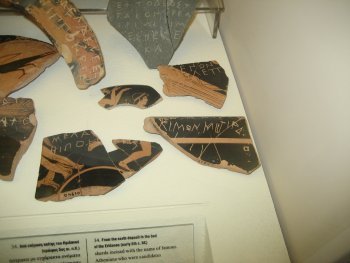The Cimetière du Père-Lachaise of Ancient Athens
One of the places we visited on the first day was the Kerameikos which was the ancient cemetery of the late and great. It is a few meters from the slope of the Acropolis and was the first ancient site we saw. The Kerameikos is fenced in with an admission charge, a museum housing the Oberlander Collection, a printed guide, and some signs. It was at the Kerameikos that we bought our six-sites for twelve euros tickets that we dutifully used up in the coming days. (We saw the site of Plato’s Academy first, but it is basically a field with none of appurtenances listed above.) See
http://odysseus.culture.gr/h/3/eh351.jsp?obj_id=2392
http://www.stoa.org/athens/sites/kerameikos.html
I wanted to visit the Kerameikos because it was the site of Pericles’s famous funeral oration. Like much else from Master Thucydides, it is quoted a lot, and usually without any understanding of the context. So, Kate in tow, we made our way from the ticket office down to the burial ground.

In my research I had gotten mixed up for a while. I know that the bleaders never get confused but it happens to me. Not only does the Kerameikos figure in the guidebooks, maps, and web sites but so does the First Athens Cemetery. For awhile I thought these two were one and the same and the difference was one of terminology. Wrong! But I realized my error, thanks for to my continued re-reading of the guidebooks, maps, and web sites. The first modern cemetery, which has an impressive mausoleum for Friederich Schleimann of Troy, is from the 19th Century. Whereas the Kerameikos is several millennia old.


In addition to admiring the funerary art in situ (some of which are reproductions with the originals in museums) I also stood in the Dipylon (Double) Gate way where Pericles stood to deliver that famous speech. I walked along some of the wall Themistocles built, well had built, after the Persians, who sacked and burned Athens, were driven out with the battle at Salamis. The wall is more than a pile of stones, though it is that, it was in fact a series of walls – defence in depth, it is now called, with ditches in between at places to funnel attackers. The bed of the Eridanos River that once watered Athens runs through the Kerameikos as well, though it is barely more than a line green grass when we were there.
The Oberlander collection is housed in the Kerameikos Museum on site.
On Gustav Oberlander see http://www.bad-nauheim.de/tourismus_historiederstadt_beruehmtebesucher_gustavoberlaender.html
One of the many objects was a pottery shard use to name citizens for ostracism, this was the Athenian version of cutting tall poppies. One shard on display is clearly marked with Kimon’s name on lower right.

There was much else to see, including this urn thought to have held the exhumed remains of Alcibiades when he was returned to Athens. He was also a fire from heaven like Alexander, and he burned a lot of people whom he touched without the grandeur that Alexander had.
<
